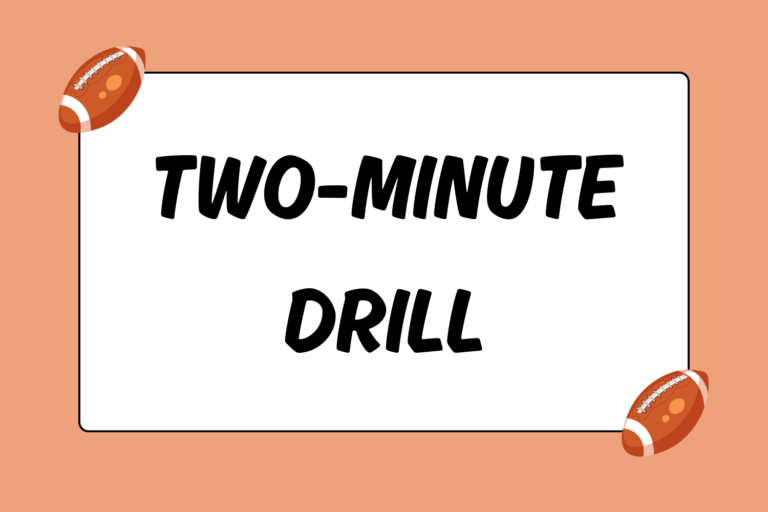When most people think of special teams, their minds probably go right to punting and kickoffs — the special teams dedicated to transferring possession of the ball. While it’s true that those game structures do indeed fall under the special teams category, they are by no means the only types, nor is transferring possession of the ball the only special teams task. The other half of the special teams structures deals with different ways of scoring points: field goals, PATs, and even 2-point conversions.
Points are Points
Because they earn a team the greatest number of points, a touchdown is obviously the most desired way to score. It’s also frequently the most difficult way to score, though scoring a touchdown rewards the offensive teams with the opportunity to grab either one or two additional points. Because of that difficulty, it’s common for offensive teams to attempt a field goal instead.
The Field Goal
On fourth down, the offensive team has a difficult decision to make. Taking into account several factors (the score, amount of time left in the game, field position, weather, etc.) the offense will choose one of three options: run a normal play, punt, or kick a field goal. If the offense is close enough to the other team’s end zone, there’s a good chance they will elect to kick a field goal.
- This decision recognizes the very low odds that the offense will be able to score a touchdown or gain enough yards for a new set of downs in only one play.
- It also announces that the offense believes they’re far enough in the opposing team’s territory that punting wouldn’t be nearly as beneficial.
Kicking field goals is a safe way to get a few points without requiring the offense to drive all the way into the defense’s end zone.
How it Works
Much like other special teams structures, the field goal utilizes a handful of specialized players and unique formations. Here’s a look at what’s needed for a field goal:
Players: Unlike other football structures, the field goal requires only the offensive group to have specific players involved. These players are the long snapper (often the same player snapping on punts), the holder (often the punter or back-up quarterback), and the kicker (often the same player who handles kickoffs). On the defensive side of the ball, there only needs to be 11 players trying to block the kick, though teams frequently use a specific set of players for this task.
Formations: Although the arrangement of players on both sides of the ball is unique to the field goal situation, the kicking team’s formation is more structured and defined compared to the defense’s formation. Here’s what a basic field goal formation looks like:
- The kicking team will have almost all of its players arranged in a slightly curved line along the line of scrimmage (LOS), with the long snapper at the very top of the half circle and the rest of the players arranged closely together on either side. This is done to create a large area of protection against defenders, allowing the kicker a chance to kick the ball.
- The only players not involved in making that pocket are the holder and kicker. The holder will be five to eight yards behind the LOS (depending on how far the kick will be), and the kicker will be three to five yards behind the holder.
- The defense will have almost all of their players along the LOS, ready to try to penetrate the protection and block the ball. However, if the field goal is being attempted from a longer distance, occasionally one defensive player will hang back by the end zone. This is done in case the field goal falls short but stays in the field of play, resulting in a live ball that the defense may choose to advance (at the collegiate level and above).
Although technically they can be attempted from any point on the field, most teams won’t try for a field goal unless they’re close to the other team’s 35-yard line (and preferably closer). Because the uprights sit at the back of the end zone, this tacks an additional 10 yards onto the distance from the LOS, not to mention the distance from the LOS to the holder, where the ball is actually kicked.
Regardless of the distance, here are the steps involved in kicking a field goal:
Step 1: Lining Up
Both teams line up in their respective formations. The kicker usually requires several seconds to get in place, so this takes longer than with normal plays.
Step 2: Preparation
The holder will check that the kicker is ready, then turn and makes a signal to the long snapper. The long snapper hikes the ball to the holder, and the play begins.
Step 3: The Play Unfolds
As soon as the ball is snapped, the defensive players will surge forward and try to disrupt the kick, while the offensive players attempt to keep them at bay. The kicker also starts moving forward. The holder catches the snap and quickly gets the ball into position for the kick — almost perfectly upright, with one point in the ground or on a tee and the other held still by a finger or two.
Step 4: Kicking the Ball
Depending on the result, there are several possible outcomes:
- If it goes through the uprights, the kicking team gets three points and the game is restarted with a kickoff.
- For kicks inside the 20-yard line: If the kick misses and goes out of bounds, the defense takes over at their 20-yard line.
- For kicks outside the 20-yard line: If the kick misses and goes out of bounds, the defense takes over at the spot of the kick.
- If the kick misses completely but does not go out of bounds, it is live and may be played (this rule depends on the type/level of football).
Field goals are extremely common, but are by no means a guaranteed way to get points. Successful kicking comes from having an accurate assessment of the situation and knowing the limits of the kicker’s abilities.
The Try
After a touchdown is scored, the scoring team is further rewarded with the chance to gain one or two additional points. This extra point(s) opportunity is called the ‘try’, though most people know it as the time when a point-after-touchdown or 2-point conversion is attempted. Of the two try options, kicks are by far the safer and more popular choice, although occasionally it makes sense for the scoring team to attempt to score two points. An example of such a situation would be if there was very little time left in the game, and the scoring team needs two points to at least tie the game and head into overtime.
- The Point-after-touchdown: Also known as the PAT, the Point-after-touchdown is nothing more than a standard field goal that’s attempted from the 3-yard line (2-yard line in high school). Though the PAT is worth one point while a field goal is worth three, everything else about the PAT is exactly the same as a field goal.
- The 2-Point Conversion: Instead of kicking a PAT, the scoring team can choose to run one normal offensive play for a shot at getting two points rather than one. The scoring team must get the ball into the end zone, either by pass or by run, to earn two points.
In both situations, if the try attempt fails (often referred to as ‘no good’) then no additional points are awarded and play restarts with the scoring team kicking the ball off to the other team.
A Few Points is Better than None
Both teams want to score as many touchdowns as possible, and with every touchdown comes the opportunity for bonus points. Accordingly, no one wants to settle for field goals. But in a game like football, where the final outcome can be decided by a few inches gained or lost, most players and coaches know when to play the odds and take the safe points. This means more field goals and PATs, and less ‘going for it on fourth down’ and 2-point conversions.





